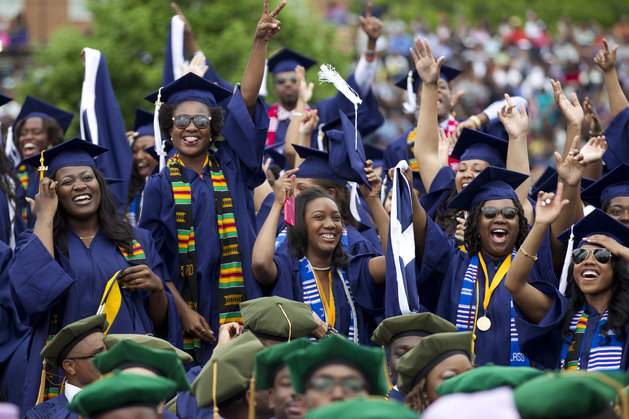
Many students at HBCUs are first generation college students who have the opportunity to test their ideas and future objectives after school through direct experience.
During my freshman year at Central State University, I followed my dream to become the nation’s leading tennis reporter/coach, in case my talent on the tennis courts could not take me to South Beach.
Two things can be taken from this: For one, students who are self-prescribed ‘tennis junkies’ actually exist at HBCUs and two; I had the option to test and fail my plan under college world conditions.
More than 2,000 other students at Central State have the same opportunity each year to go to college because of its open enrollment.
Dictionary.com says open admission is a policy of admitting applicants to an institution, especially a university, regardless of previous academic record or grades.
The policy creates equal opportunity for the rich, the middle class and the “have-nots,” to get an education, but what happens when a lifelong source for learning abandons tradition?
Historically black Paul Quinn College in Dallas, Texas got rid of its open admissions policy and saw retention rates shoot up from about 60 or 65 percent to 83 percent and was named the “2011 HBCU of the Year” among other awards and recognition.
PQC President Michael Sorrell cites personalized recruiting like other institutions use to recruit athletes, to “intrusive counseling,” in order to turn things around, according to an article on Diverse Issues.
Other HBCUs have also questioned their open admissions policy.
Miles College in Alabama wanted to create a “more stringent, selective admissions process,” noting how they serve a different “clientele and [are] in a different arena than the past.”
President of Texas Southern University John M. Rudley said a university should not have to accept anybody with a GED.
“That means they didn’t complete high school but they can come here without the same preparation as others and then be expected to compete,” said Rudley.
If HBCUs have stood the test of time by serving disproportionate shares of low-income students, can our much-loved institutions really afford to lose more black youths today if open admission is no longer present?
Tell us what you think and comment below and tweet me your perspective on Twitter: @tommymeade_
[divider]



